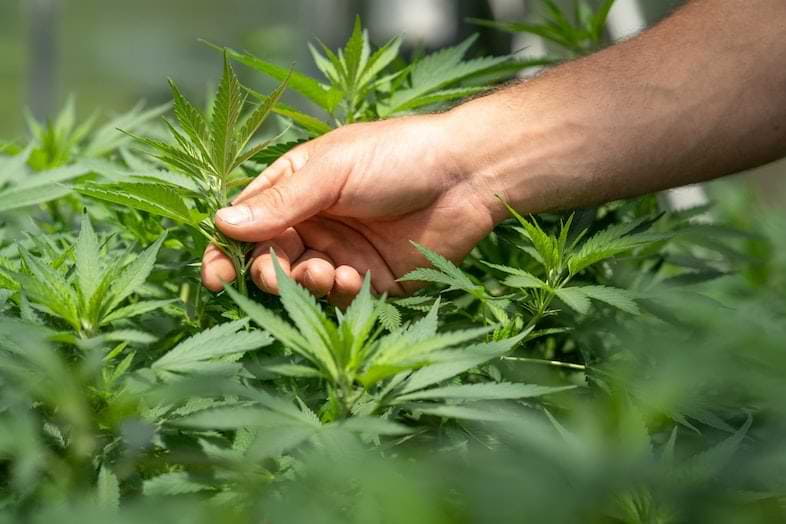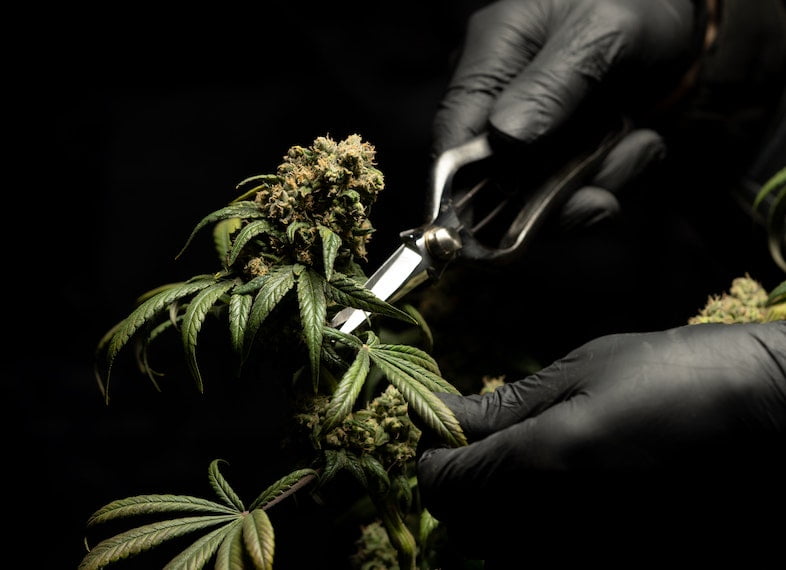Modified on: 20/09/2022
Here are how many types of pruning there are and what benefits they bring to a hemp plant
If you have a passion for marijuana plants and seeds, the chances are that all aspects related to this world hold some interest for you. We at Sensoryseeds, UK’s leading online marijuana seed website, are very attentive to the curiosity of ganja enthusiasts. In our blog, we often cover topics relating to the various uses and methods of growing and storing the derivatives of this plant.
In the following few lines, we will address a fascinating topic, namely the various pruning methods that hemp growers use to increase the yield of their plants.


Topping: how and when to cut the apical top
One of the main pruning techniques for the cannabis plant (but not only) is topping. This method is well known to growers as it is the simplest and most effective for stimulating the plant to develop new tops and produce more inflorescences. But how is this type of pruning done on plants born from the germination of cannabis seeds? And what is the right time to do it?
Well, from a practical point of view, it is an elementary pruning that can be done either with a pair of scissors or by hand, provided that both tools are perfectly clean and sanitised (this, for the health of the plant). Topping involves cutting off the apical tip, i.e. the main branch of the shrub; this should only be done during the vegetative phase and never during flowering, approximately when the plant’s height approaches 30 cm.
With the removal of the apical top, two results are achieved at the same time, both of which are beneficial for yield: two tops will grow below the cut, and the plant’s hormones will be distributed throughout the stem, giving rise to new branches. You will, therefore, have a thicker and more developed plant on the sides.
It must be remembered, however, that topping significantly lengthens the vegetative phase of the plant, which needs at least a week to recover from the shock. Furthermore, it would be better to avoid this treatment on plants born from autoflowering seeds as they flower rather quickly.
Read also: Grow box ventilation: why air recirculation is vital
Fiming: the ‘imprecise’ topping
Along the same lines as topping, a technique has developed that was born out of a mistake (and its name bears witness to this): FIM pruning, which stands for ‘Fuck I Missed’, is not very different from the technique we mentioned in the previous paragraph, but it does have one significant difference: the apical top is not removed entirely but only 75%, again by pinching it off or cutting it with scissors.
What does it change, however, in practice? Well, on the rest of the plant, nothing. On the top, however, the result of this variant is the development of four new branches instead of two. Naturally, this technique also puts the plant’s growth on hold for a few days, but it is a sacrifice of time justified by the productivity it will show during flowering. Like topping, fimming is also off-limits for autoflowering.


Defoliation and cutting off the lower branches
We continue our journey of discovery into cannabis pruning techniques with two more actions that can significantly impact yield. But, again, these are treatments to be carried out during the vegetative phase: removing some leaves and cutting the lower branches.
On the subject of defoliation, you should know that although many hemp enthusiasts and growers are somewhat afraid of it, it is a treatment that can increase the plant’s productivity. But, of course, it must be done judiciously. Keep in mind that leaves prevent light from adequately illuminating some buds, limiting their development during flowering. Therefore, lightening the stem helps to obtain larger inflorescences.
Cutting branches from the lower part of the plant (let us say the first two rows), on the other hand, optimises aeration and allows the plant to develop the higher branches, i.e. those most exposed to light.
Read also: Trimming cannabis: why it is essential to do it right
Lollipopping: flowering pruning that increases yields
So far, we have discussed pruning techniques to be carried out during that period when the cannabis plant is developing and growing. But when the long-awaited moment comes when the care and attention given to it is rewarded, i.e. flowering, is there a way to show its productivity an extra boost? In short, is it possible to prune the hemp plant even when its inflorescences begin to appear? Of course, it is.
The technique in question is called ‘Lollipop’ because of the shape the branches take after pruning. This treatment consists of removing the lower and smaller tops during the third or fourth week of flowering to encourage the growth of the taller and larger ones. The appearance of the branches after cutting off these tops is similar to that of a lollipop, but what matters is that the inflorescences develop better.
In conclusion
Pruning is a very important time in cultivating various plants, and hemp is one of them. We at Sensoryseeds.com would like to remind you that cultivating cannabis in the UK is illegal, except in exceptional cases where you have medical or light marijuana production permits. However, nothing prevents you from buying the best autoflowering cannabis seeds, feminized and fast flowering seeds in our online shop for collecting purposes.
Visit our e-shop SensorySeeds and discover our weed seeds!









